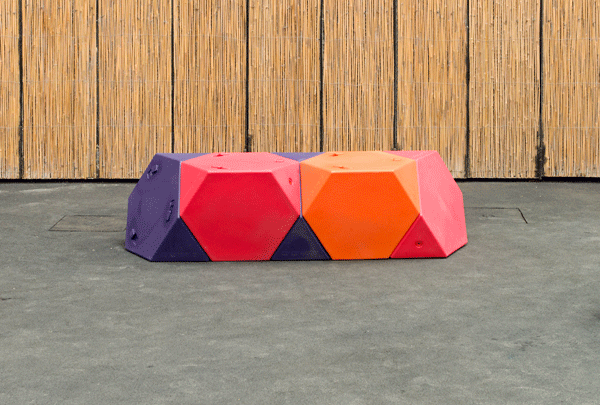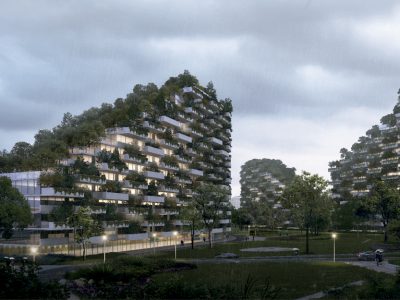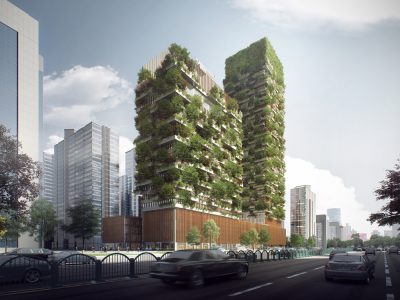Ecosistema Urbano has designed a modular seating concept for the Spanish pavilion for the 2010 Shanghai World Expo. The standard module of the Madrid chair is based on the geometry of a tetrahedron with truncated sides that is easily assembled with the corresponding planes of other modules.
Madrid chair, Ecosistema Urbano, 2010.
The rotomolded plastic pieces are available in red, orange and violet, and different arrangements generate varying volumes and colour compositions creating seats, benches or more sophisticated structures.
To prevent the pieces from moving, a set of connecting clips on three of its four sides rotate into each other to fit. When vertically arranged one of the sides containing connecting clips must face up to prevent sliding.
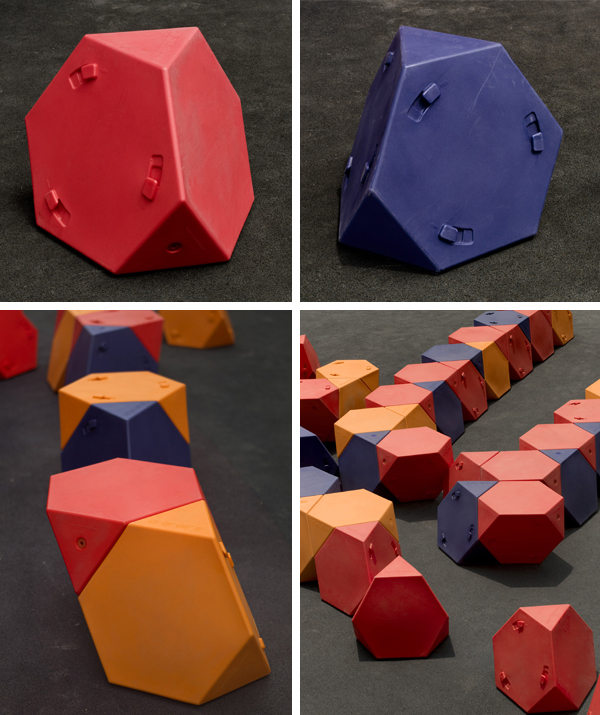
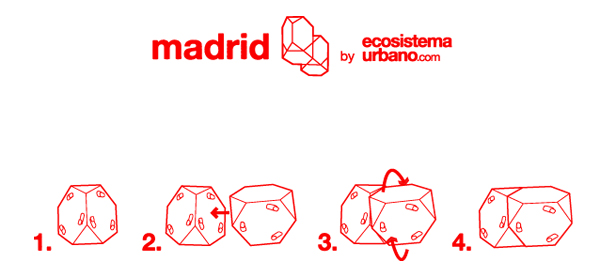
Assembly instructions, Madrid Chair, Ecosistema Urbano, 2010.
Created in the year 2000, Ecosistema Urbano focuses on research in the engineering and architectural world in an attempt to emphasize environmental issues in the development of projects where design is a fundamental aspect of social advance. They regard the city as a complex phenomenon where architecture, town planning, engineering and sociology interact to produce a context in which their activity could be described as ‘sustainable urban creativity’.
They have been awarded several prizes including the Geneva 2005 Sustainable Construction ‘Reconocimiento Europeo de la Fundación Holcim’ prize. Ecosistema Urbano has been included in Antonio Camuñas’s Foundation top ten under 40 Spanish architects list.
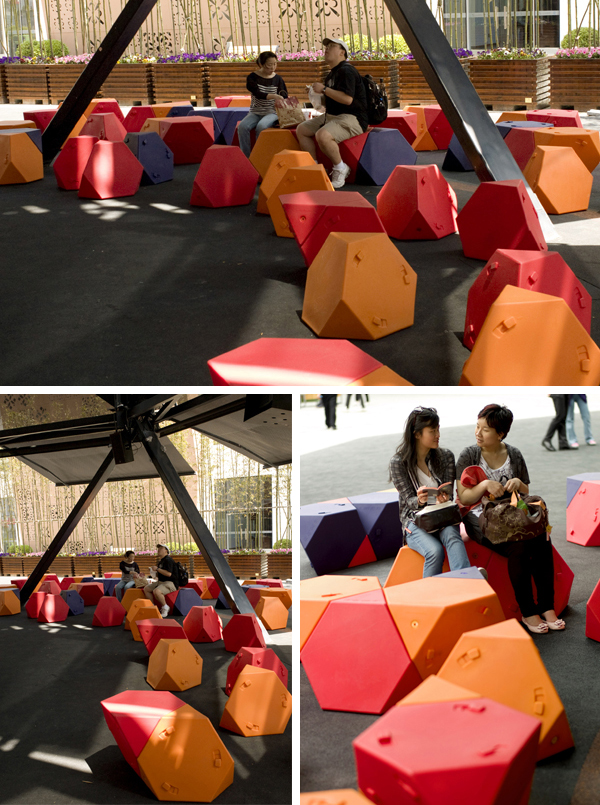 Madrid chair, Ecosistema Urbano on the Spanish pavilion for the 2010 Shanghai World Expo.
Madrid chair, Ecosistema Urbano on the Spanish pavilion for the 2010 Shanghai World Expo.
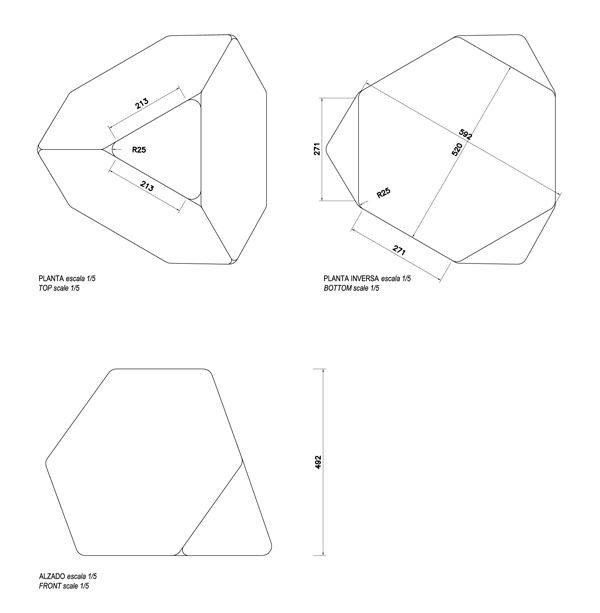
Floor plans and front view, Madrid Chair, Ecosistema Urbano, 2010.

